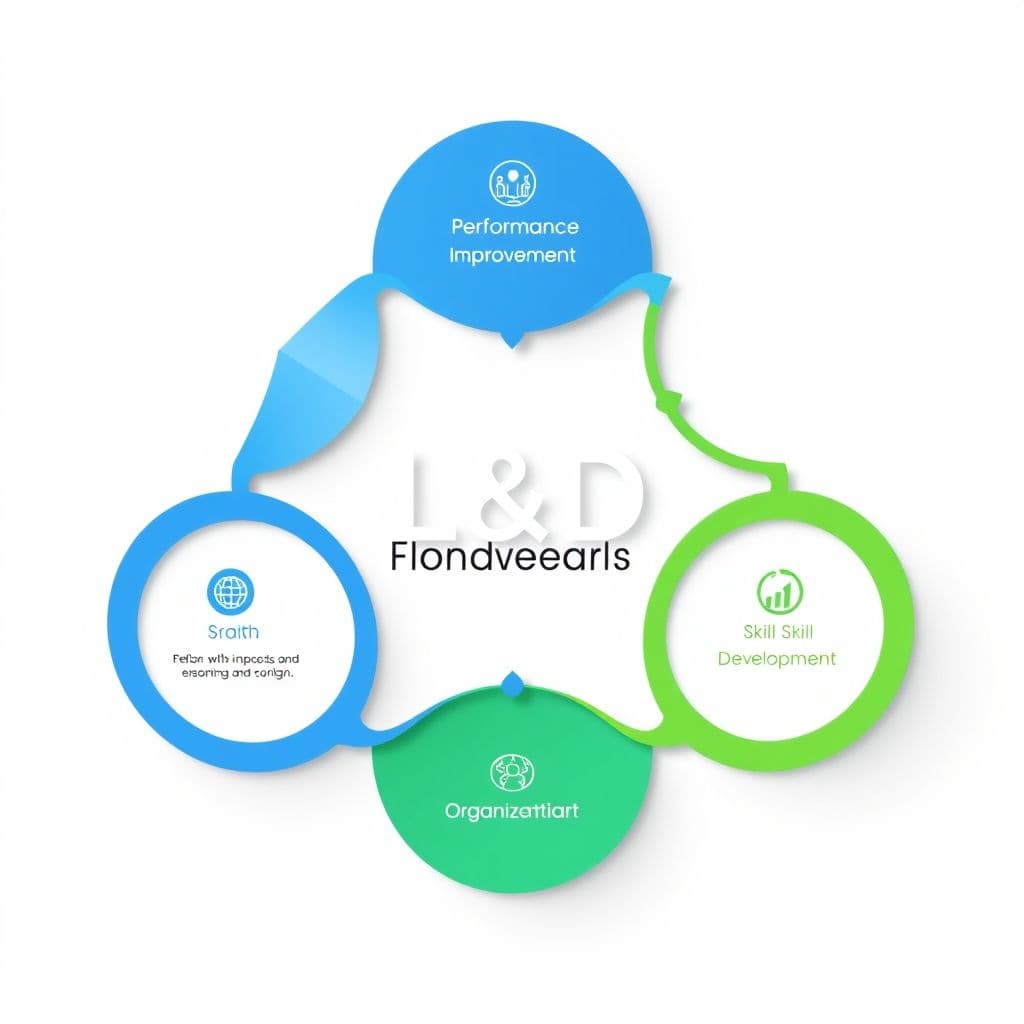Master Learning and Development Coaching: Complete Guide to Building Effective Training Programs

In today's rapidly evolving workplace, Learning and Development (L&D) coaching has become a cornerstone of organizational success. Whether you're an HR professional looking to expand your skillset, a trainer seeking to enhance your impact, or a leader wanting to develop others more effectively, mastering L&D coaching can transform both your career and your organization's performance. This comprehensive guide will walk you through the essential steps to become a proficient Learning and Development coach, from understanding foundational theories to implementing measurable improvement strategies. By the end of this journey, you'll have the knowledge and tools to design, deliver, and evaluate learning programs that create lasting change. View original learning path
Step 1: Understand the Basics of Learning and Development
Learning and Development is the systematic process of enhancing employees' knowledge, skills, and abilities to improve both individual performance and organizational effectiveness. At its core, L&D is about creating intentional opportunities for growth that align with business objectives while addressing individual learning needs. The importance of L&D in organizations cannot be overstated—companies with comprehensive learning programs see 37% higher employee productivity and 92% higher employee retention rates. The key principles of effective L&D include alignment with strategic goals, relevance to job performance, active learner engagement, continuous reinforcement, and measurable outcomes. Understanding these foundations will help you approach L&D coaching with a strategic mindset rather than treating it as just another training initiative.

Step 2: Familiarize Yourself with Adult Learning Theories
Adult learning differs significantly from child learning, and understanding these differences is crucial for effective L&D coaching. Andragogy, coined by Malcolm Knowles, focuses on the unique characteristics of adult learners: they are self-directed, bring rich life experiences, are problem-centered rather than subject-centered, and are internally motivated. This contrasts with pedagogy, which assumes learners are dependent and externally motivated. Knowles' theory emphasizes that adults learn best when they understand the relevance of the learning, can connect new information to their experiences, and have some control over the learning process. Other important theories include David Kolb's Experiential Learning Theory, which suggests learning happens through a cycle of concrete experience, reflective observation, abstract conceptualization, and active experimentation. Transformative Learning Theory by Jack Mezirow focuses on how adults change their perspectives through critical reflection. As an L&D coach, applying these theories means creating learner-centered experiences that respect adult autonomy while providing practical, immediately applicable knowledge.
Step 3: Learn about Training Needs Analysis
Training Needs Analysis (TNA) is the systematic process of identifying gaps between current performance and desired performance, then determining whether training can bridge those gaps. This crucial step prevents the common mistake of designing training without clear purpose. Effective TNA involves three levels of analysis: organizational (strategic goals and culture), task (specific job requirements and skills), and individual (current competencies and learning preferences). Methods for conducting TNA include surveys, interviews, focus groups, observation, performance data analysis, and competency assessments. The key is identifying whether performance gaps stem from lack of knowledge, skills, motivation, or environmental factors. Only knowledge and skill gaps should be addressed through training—motivation and environmental issues require different interventions. A thorough TNA results in clear, measurable training objectives that directly link to business outcomes and individual development needs.

Step 4: Design Effective Learning and Development Programs
Designing effective L&D programs requires a structured approach using proven instructional design models. The ADDIE model (Analyze, Design, Develop, Implement, Evaluate) provides a systematic framework that ensures thorough planning and continuous improvement. The SAM (Successive Approximation Model) offers a more agile, iterative approach better suited for rapidly changing environments. Regardless of the model, successful program design starts with clear learning objectives written in measurable terms—what learners will be able to do, under what conditions, and to what standard. These objectives drive decisions about instructional methods, from traditional classroom training to e-learning, simulations, mentoring, or blended approaches. The key is matching methods to learning objectives and learner preferences while considering practical constraints like budget, time, and resources. Effective design also incorporates spaced learning, varied practice opportunities, and real-world application scenarios to maximize retention and transfer.
Step 5: Develop Engaging Learning Materials
Creating engaging learning materials requires balancing educational effectiveness with learner engagement. Start with clear, concise content that follows a logical progression from simple to complex concepts. Apply visual design principles like contrast, alignment, repetition, and proximity to make materials easy to navigate and understand. Use consistent formatting, clear headings, and white space to reduce cognitive load. Interactive elements such as quizzes, case studies, role-plays, and group discussions keep learners actively engaged rather than passively consuming information. Multimedia elements like videos, animations, and infographics can explain complex concepts more effectively than text alone, but should enhance rather than distract from the core message. Remember that adults learn best when they can immediately apply new knowledge, so include practical exercises, job aids, and reference materials they can use back on the job. Always design with accessibility in mind, ensuring materials work for learners with different abilities and technology access.
Step 6: Implement and Facilitate Learning Programs
Successful program implementation relies heavily on effective facilitation skills that create an environment conducive to adult learning. Master the basics of presentation skills: clear speaking voice, confident body language, and engaging visual aids. However, facilitation goes beyond presenting—it's about guiding learning through questioning, discussion, and experiential activities. Develop techniques for managing group dynamics, such as encouraging quiet participants, managing dominant personalities, and handling resistance to learning. Create psychological safety where learners feel comfortable sharing experiences and making mistakes. For virtual or blended learning environments, master technology tools while maintaining human connection through interactive polls, breakout rooms, and collaborative platforms. Use techniques like the flipped classroom model, where learners consume content beforehand and use live time for application and discussion. Remember that your role as facilitator is to guide discovery rather than simply transfer information.

Step 7: Evaluate and Measure Learning Effectiveness
Evaluation is critical for demonstrating the value of L&D initiatives and driving continuous improvement. Kirkpatrick's Four Levels of Evaluation provide a comprehensive framework: Level 1 (Reaction) measures learner satisfaction and engagement; Level 2 (Learning) assesses knowledge and skill acquisition; Level 3 (Behavior) evaluates on-the-job application and behavior change; and Level 4 (Results) measures business impact like productivity, quality, or cost reduction. Design evaluation methods appropriate to each level, from simple satisfaction surveys to complex ROI calculations. Use pre-and post-training assessments, observation checklists, 360-degree feedback, and performance metrics to gather comprehensive data. The key is establishing baseline measurements before training and following up at appropriate intervals afterward. Level 3 and 4 evaluations are most challenging but provide the strongest evidence of training effectiveness. Remember that evaluation should be planned during the design phase, not added as an afterthought.
Step 8: Continuously Improve Learning and Development Initiatives
Continuous improvement transforms good L&D programs into great ones by systematically incorporating feedback and adapting to changing needs. Establish regular feedback collection mechanisms throughout the learning process, not just at the end. Use formal methods like surveys and focus groups alongside informal approaches like one-on-one conversations and observation. Analyze evaluation data to identify patterns and trends—what's working well, what's causing confusion, and where learners are struggling to transfer learning to their jobs. Create action plans to address identified issues, whether that means updating content, changing delivery methods, or providing additional support resources. Stay current with organizational changes, new technologies, and evolving best practices in L&D. Build relationships with key stakeholders to understand shifting business priorities and emerging skill needs. Remember that improvement is an ongoing process, not a one-time activity. The most effective L&D coaches view every program as an opportunity to learn and refine their approach.
Conclusion
Mastering Learning and Development coaching is a journey that requires combining theoretical knowledge with practical application. By following these eight steps—from understanding L&D fundamentals to continuously improving your programs—you'll develop the skills needed to create meaningful learning experiences that drive both individual growth and organizational success. Remember that effective L&D coaching is about more than just delivering training; it's about understanding adult learners, systematically identifying needs, designing targeted interventions, and measuring impact. The field of L&D is constantly evolving with new technologies, methodologies, and research insights, so commit to being a lifelong learner yourself. Your dedication to developing others will not only advance your career but also contribute to creating workplaces where people can grow, thrive, and achieve their full potential.
Frequently Asked Questions
- How long does it take to become proficient in Learning and Development coaching?
- Developing proficiency in L&D coaching typically takes 12-18 months of consistent practice and study. However, you can begin applying basic principles immediately. Focus on mastering one step at a time, starting with understanding adult learning theories and conducting needs analyses. Continuous practice and feedback will accelerate your development.
- What are the most common mistakes new L&D coaches make?
- Common mistakes include skipping the training needs analysis, focusing on activities rather than learning outcomes, using one-size-fits-all approaches, neglecting follow-up and reinforcement, and failing to measure actual behavior change and business impact. Always start with clear objectives and end with measurable results.
- Do I need formal certification to become an L&D coach?
- While formal certification isn't always required, it can demonstrate credibility and provide structured learning. Consider certifications from organizations like ATD (Association for Talent Development), SHRM, or specific instructional design credentials. However, practical experience and proven results are often more valuable than certificates alone.





